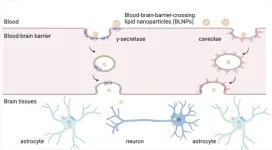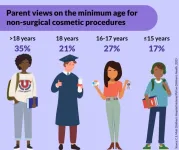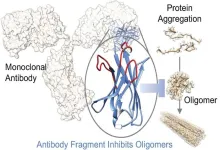(Press-News.org) Thousands of single changes in the nucleotides that make up the human genome have been associated with an increased risk of developing cancer. But until now, it’s not been clear which are directly responsible for the uncontrolled cellular growth that is the hallmark of the disease and which are simply coincidences or minor players.
Stanford researchers have conducted the first large-scale screen of these inherited changes, called single nucleotide variants, and homed in on fewer than 400 that are essential to initiate and drive cancer growth. These variants control several common biological pathways, including those governing whether and how well a cell can repair damage to its DNA, how it produces energy, and how it interacts with and moves through its microenvironment.
These common themes hint at new therapeutic targets aimed at preventing cancer or stopping its growth, the researchers believe. Understanding which variants contribute significantly to cancer risk may also enhance genetic screening meant to assess a person’s lifetime risk of cancer.
“We distilled large compendia of information from millions of people diagnosed with any of the 13 most common cancer types, which constitute over 90% of all human malignancies,” said Paul Khavari, MD, PhD, chair of dermatology. “This enormous funnel of data allowed us to identify 380 variants that control the expression of one or more cancer-associated genes. Certain variants, if you are unlucky enough to inherit them from your parents, can increase your risk of developing many types of cancer.”
Khavari, who is the Carl J. Herzog Professor in Dermatology in the School of Medicine, is the senior author of the research, which was published on Feb. 17 in Nature Genetics. Former graduate student Laura Kellman, PhD, is the lead author of the study.
The risks we inherit
The study focused on DNA sequences inherited at conception, known as a person’s germline genome, rather than on mutations that can accumulate during a person’s lifetime as cells divide during development or to repair injury. Examples of well-known inherited cancer-associated mutations are the BRCA1 and BRCA2 genes that confer a significantly increased risk of breast and ovarian cancers. But only a few of these high-profile mutations are currently used to predict cancer risk.
The variants Kellman and Khavari identified are not in so-called “coding” genes, which encode the instructions to make proteins that do much of the work of the body. Instead, they are in regulatory regions that control whether, when and how much these genes are expressed. Often these regulatory regions influence the expression of nearby genes; sometimes they influence distant genes.
In 2020, Khavari launched a research project funded by the National Human Genome Research Institute to develop the Atlas of Regulatory Variants in Disease to pinpoint variants linked to the risk of developing 42 common complex diseases including cancers, develop individualized risk scores for each disease to aid in screening and prevention, and suggest new treatment strategies.
Previous studies, known as genome-wide association studies, identified variants found more often in people with specific kinds of cancers than in their cancer-free peers — a kind of guilt-by-association metric. But these studies, of which there have been many, fall short of proving that the variations change the activity of the regulatory region in ways that pump up or tamp down the expression of the genes they regulate; they also do not identify which genes are affected.
Kellman, Khavari and their colleagues took a different approach. They amassed over 4,000 suspect variants identified by genome-wide association studies, or GWAS, in 13 types of cancer and tacked those regulatory regions — along with control sequences — to DNA sequences, each with a unique bar code. They then conducted what are known as massively parallel reporter assays to determine which variants changed the expression of the bar-tagged sequence in the relevant cell type, testing variants associated with lung cancer in human lung cells, for example.
Winnowing thousands of potential variants down to a few hundred functional regulatory regions allowed the researchers to combine information from pre-existing databases about DNA folding, tissue-specific gene expression profiles and others to identify about 1,100 target genes likely to play a role in cancer development. Some are specific to a certain type of cancer while others appear to increase the risk of several cancers.
“A lot of these genes make sense in the context of what we know about cancer development,” Khavari said. “Some are involved in cell death pathways, and others affect how cells interact with the extracellular environment, for example. One of the most prominent pathways is involved in the function of cellular mitochondria — tiny cellular energy factories that support cell growth and division.”
The immune system’s role
But the researchers also found things that surprised them.
“One pathway that really popped out includes a number of genes closely associated with inflammation,” Khavari said. “While a connection has been established between inflammation and cancer, it’s not been clear what was driving this process — the cancer cells or the immune system. This finding suggests there may be cross talk between cells and the immune system that drives chronic inflammation and increases cancer risk.”
Finally, the researchers used gene editing techniques in laboratory-grown cancer cells to show that as many as half of the variants are required to support ongoing cancer growth. They expect the study’s findings will be a springboard for researchers around the world seeking to understand inherited cancer risk and develop new therapies.
“Now we have a first-generation cartographic map of functional single nucleotide variants that determine a person’s lifetime cancer risk,” Khavari said. “We expect that this information will be incorporated into increasingly informative genetic screening tests that will become available over the next decade to help determine who is most at risk for many types of genetically complex diseases, including cancer. This general approach may help provide an individualized risk assessment for common diseases to guide interventions, such as lifestyle changes, pharmacologic preventatives and diagnostic screening.”
The study was funded by the U.S. Veterans Affairs Office of Research and Development and the National Institutes of Health (grants AR076965, AR43799, CA142635 and U24HG010856).
END
Researchers identify DNA changes, biological pathways associated with inherited cancer risk
2025-02-17
ELSE PRESS RELEASES FROM THIS DATE:
New lipid nanoparticle platform delivers mRNA to the brain through the blood-brain barrier
2025-02-17
New York, NY [February 17, 2025]—Scientists at the Icahn School of Medicine at Mount Sinai have developed a lipid nanoparticle system capable of delivering messenger RNA (mRNA) to the brain via intravenous injection, a challenge that has long been limited by the protective nature of the blood-brain barrier.
The findings, in mouse models and isolated human brain tissue, were published in the February 17 online issue of Nature Materials [10.1038/s41563-024-02114-5]. They demonstrate the potential of this technology to pave the way for ...
Wildfires in the Andes cause severe soil degradation and hinder ecosystem recovery
2025-02-17
In September 2018, a wildfire burned nearly two thousand hectares of shrubland on the Pichu Pichu volcano, an ecologically significant area in the Peruvian Andes. Unlike Mediterranean ecosystems, where vegetation has evolved strategies to withstand fire, the volcanic soils of Arequipa—one of the driest regions in the world—are not adapted to wildfire disturbances. A Miguel Hernández University of Elche (UMH) research team collected and analyzed soil samples from the burned area at 3,700 meters above sea level to understand how these fragile ecosystems ...
Men and boys matter: Psychology professor reveals hidden issues we need to talk about
2025-02-17
These include those linked to body image, fatherhood and sexual relationships. His latest book - Current Issues Facing Men and Boys – also argues that men struggle to negotiate harmful notions of masculinity and are not included in conversations around gender.
Current Issues Facing Men and Boys urges the public, policymakers, practitioners and other key stakeholders to explore and support policies and practices that promote male wellbeing. This book comes as the UK government announces plans for the country's first men's health strategy, aiming ...
1 in 6 parents support teens getting non-surgical cosmetic procedures with parental consent
2025-02-17
For teens who may be self-conscious about issues such as acne scarring or discolored teeth, non-surgical cosmetic procedures are an increasingly popular way to address their concerns.
And some parents are supportive of this decision, a national poll suggests, with a sixth saying teenagers should be allowed to receive these types of aesthetic treatments for any reason as long as they have parental approval.
But half of parents only support teens getting non-surgical cosmetic procedures if there’s a valid reason – and their beliefs about which reasons count as valid differ – according to ...
Journalist travel grants available for 12th Heidelberg Laureate Forum
2025-02-17
This September, recipients of the Abel Prize, ACM A.M. Turing Award, ACM Prize in Computing, Fields Medal, IMU Abacus Medal and the Nevanlinna Prize are invited to gather in Heidelberg to meet with 200 young researchers from all over the world at the 12th Heidelberg Laureate Forum (HLF). In order to reach a broader, more diverse and international audience, the Heidelberg Laureate Forum Foundation (HLFF) encourages journalists to cover the event and affords them the chance to interact with the preeminent scientists of mathematics and computer science. The 12th HLF will take ...
Are we still primitive? How ancient survival instincts shape modern power struggles
2025-02-17
The evolutionary roots of human dominance and aggression remain central to social and political behaviour, and without conscious intervention these primal survival drives will continue to fuel inequality and division.
These are the arguments of a medical professor who, as global conflicts rise and democracies face growing challenges, says understanding how dominance and tribal instincts fuel division is more critical than ever.
In A New Approach to Human Social Evolution, Professor Jorge A. Colombo MD, PhD explores neuroscience, anthropology, and behavioural science to provide a new perspective on human social evolution.
He argues that fundamental behavioural drives ...
Near-complete skull discovery reveals ‘top apex’, leopard-sized “fearsome” carnivore
2025-02-17
A rare discovery of a nearly complete skull in the Egyptian desert has led scientists to the “dream” revelation of a new 30-million-year-old species of the ancient apex predatory carnivore, Hyaenodonta.
Bearing sharp teeth and powerful jaw muscles, suggesting a strong bite, the newly-identified ‘Bastetodon’ was a leopard-sized “fearsome” mammal. It would have been at the top of all carnivores and the food chain when our own monkey-like ancestors were evolving.
Findings, published in the peer-reviewed Journal of Vertebrate Paleontology, detail ...
Reintroducing wolves to Scottish Highlands could help address climate emergency
2025-02-17
University of Leeds news
Embargoed until 05:01 GMT, 17 February
Reintroducing wolves to the Scottish Highlands could lead to an expansion of native woodland which could take in and store one million tonnes of CO2 annually, according to a new study led by researchers at the University of Leeds.
The team modelled the potential impact that wolves could have in four areas classified as Scottish Wild Land, where the eating of tree saplings by growing red deer populations is suppressing natural regeneration of trees and woodland.
They used a predator–prey model to ...
New antibody discovery platform can inform Alzheimer's and Parkinson's
2025-02-15
ROCKVILLE, MD – In diseases like Parkinson's and Alzheimer's, specific proteins misfold and clump together, forming toxic aggregates that damage brain cells. The process of proteins spontaneously clumping is called protein aggregation and researchers have developed novel methods to generate aggregate-specific antibodies as specific probes or modulators of the aggregation process.
This new method overcomes significant challenges in characterizing these complex and often transient protein structures. The work will be presented at the 69th Biophysical ...
The Biophysical Journal names Marcel P. Goldchen-Ohm the 2024 Paper of the Year-Early Career Investigator awardee
2025-02-15
ROCKVILLE, MD – Marcel P. Goldschen-Ohm, of the University of Texas at Austin, USA will be honored as the recipient of the Biophysical Journal Paper of the Year-Early Career Investigator Award at the 69th Annual Meeting of the Biophysical Society, held February 15-19 in Los Angeles, California. This award recognizes the work of outstanding early career investigators in biophysics. The winning paper is titled “GABAA Receptor Subunit M2-M3 Linkers Have Asymmetric Roles in Pore Gating and Diazepam Modulation.” The paper was published in Volume 123, Issue 14 of Biophysical Journal.
GABAA receptors mediate inhibitory synaptic signaling ...





